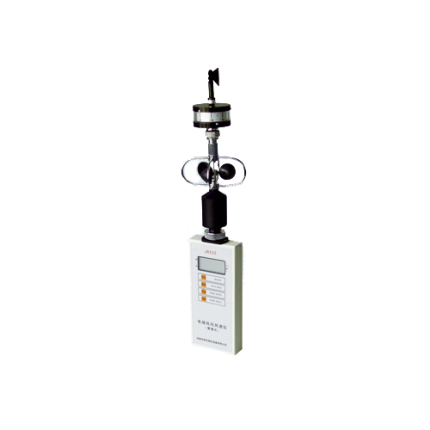Description
Overview
GAOTek Refractometer with Wide Measuring Range (High Accuracy) is designed to measure the sugar content of an aqueous solution 0 % to 95% Brix. The improved easy-to-read LCD screen displays temperature units (°C or °F) and includes five measuring scales simultaneously. GAOTek refractometer has wide measuring range, high accuracy and stability of testing are the most important features. It comes with RS232 port, and user can easily save the testing data in the personal computer and print the data when it is required. The device is extremely accurate due to its automatic temperature compensation function and includes five measuring scales simultaneously.
Features
- High accuracy
- Wide measurement range
- Stainless steel prism plate
- Water proof case design
- Up to 5 measuring scales in total can be added by the user
- Auto shut-off after 3 minutes
- High precision with automatic temperature compensation
- RS232 serial port
- Battery level display
- Measure any solutions refractive index under different temperatures.
- Zero calibration with distilled water
Technical Specifications
| Type | Range | Resolution | Accuracy |
| Brix | 0.0% ~ 95.0% | 0.1% | ±0.1% |
| Refractive Index | 1.3330 ~ 1.5318 | 0.0001 | ±0.0002 |
| Temperature Measurement Range | 0 °C to 40 °C | 0.1 °C | ±1 °C |
| 32 °F to 104 °F | 0.1 °F | ±2 °F | |
| Temperature Compensation Range | 41 °F to 104 °F (5 °C to 40 °C) | ||
| Light Source | Red LED | ||
| Scale (default) | Brix | ||
| Temperature Unit | Centigrade and Fahrenheit | ||
| Power Supply | |||
| Battery Type | 9 V battery, at least 3000 measure times per battery | ||
| AC Adapter | 9 V DC power adapter | ||
| General Specifications | |||
| Interface | RS232 serial port | ||
| Size | 7.08 in x 3.93 in x 2.36 in (180 mm x 100 mm x 60 mm) | ||
| Weight | 1.98 lbs (900 g) | ||
| Operating Humidity | < 90% | ||
| Working Temperature | 50 °F to 104 °F (10 °C to 40 °C) | ||
| Storage Temperature | 32 °F to 122 °F (0 °C to 50 °C) | ||
Additional Information
Meter Description:


Automatic Temperature Compensation (ATC)
Automatic-temperature-compensation ensures that concentration reading of aqueous (water-based) solution will be accurate with respect to the sample’s temperature. This digital refractometer is able to automatically correct for differences in the temperature of the sample to a reference temperature, usually 68 ℉ (20 ℃). It is well known that substantially all materials expand when heated (become less dense) and contract when cooled (become denser). The speed of light in liquid increases with temperature and the refractive index therefore decreases. Although this thermal effect is small for solids, the change in density of liquids is substantial. For example, the reading for a sucrose solution will change by approximately 0.5 Brix for each 41 ℉ (5 ℃) change in temperature. So a 10 Brix solution read at 108 ℉ (42 ℃) would read 8 Brix on a non-temperature compensated instrument. Many hand-held refractometers are not temperature compensated and require the user to manually take temperature measurements and apply a correction. Other hand-held refractometers offer only rudimentary compensation in the range of 65 ℉ (18 ℃) to 95 ℉ (35 ℃). This digital refractometer can automatically compensate for temperature differences within the range 41 ℉ to 104 ℉ (5 ℃ to 40 ℃). For the most accurate possible readings the instrument, the ambient temperature, and the fluid should be in equilibrium within this temperature range. When testing a sample with a temperature that deviates a great deal from the temperature of the instrument. It may be necessary to put the instrument and the fluid in the same environment for some time. A good rule is to wait approximately 30 minutes for each 41 ℉ (5 ℃) difference in temperature in order to conduct measurement after keeping the instrument, fluid to be tested and the environment in the same temperature.
Precautions
- This refractometer is an electronic instrument – it can become damaged if dropped or handled in a rough manner.
- The prism is made of optical glass and is susceptible to scratches – do not apply any rough or abrasive material and take care when cleaning the prism.
- After each use, clean the prism and prism assembly with a soft cloth or tissue soaked in water and wipe off with a dry cloth or tissue.
- Do not hold the refractometer under a stream of water from a faucet. Do not splash it with or dip it in water.
- If the surface of the prism becomes coated with an oily solution or similar, it will repel test sample and affect readings. If this occurs, the prism should be cleaned with a weakened detergent or similar solvent.
- Do not leave instrument under direct sunlight or in a vehicle on a sunny day.
- Do not use an instrument unless you have personal knowledge of calibration.



